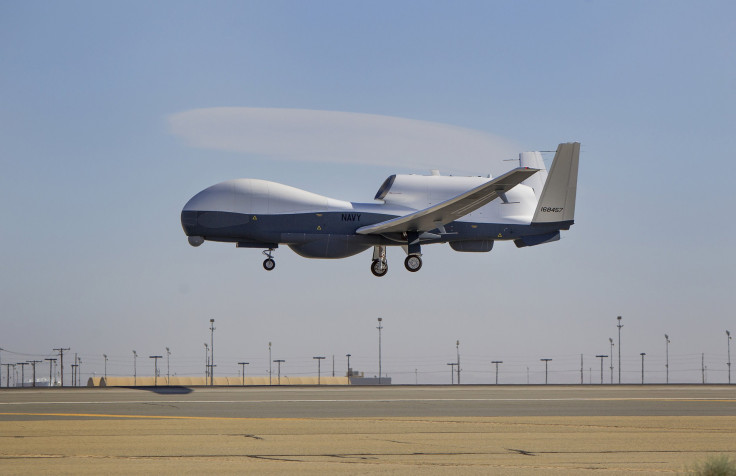Unarmed Drones Can Strengthen US And African Security
Opinion

President Barack Obama’s use of armed drones to kill terrorists has dominated the debate about unmanned aerial vehicles, while comparatively little attention has been given to non-weaponized drones. Yet these unarmed drones may be even more important to managing terrorist threats.
The United States should effectively use its fleet of unarmed surveillance drones to comprehensively combat activities that sustain terrorist organizations-- namely, transnational criminal enterprises that illegally trade in everything from arms and drugs to counterfeit clothing and ivory, and even take part in kidnappings.
Consider, for example, the linkages between the currently skyrocketing levels of rhinoceros and elephant poaching in Africa and terrorist financing, which has received major U.S. government and media attention this year.
Poachers -- many of whom are part of sophisticated international cartels -- kill defenseless animals and sell their parts, for example, rhino horns for up to $30,000 a pound and ivory from elephant tusks for $1,000 a pound on black markets, mostly in Asia. Part of the proceeds goes to such anti-U.S. terrorist organizations as al-Shabab and the Lord’s Resistance Army.
The crime-terror link surrounding poaching is not new (in 1998 a Somali warlord tied to wildlife poaching reportedly provided safe haven to al-Qaeda operatives responsible for the bombings of U.S. embassies in Kenya and Tanzania), but it is exacerbated by significantly rising levels of poaching this and last year. With the close ties to U.S. national security, President Barack Obama is now responding to the challenge.
During his recent visit to Africa, Obama announced that a presidential task force will be formed to develop a strategy to deal with wildlife trafficking. Non-weaponized surveillance drones can play an important role in this strategy to successfully combat poaching and other transnational threats. Indeed, in May, the United States and Japan agreed to assist Kenya in procuring drones for border security and countering arms trafficking, both of which increase the risk of armed conflict and improve the capabilities of poachers.
Wildlife-protection organizations are also already working with technology companies and local communities to address the poaching problem. For example, Google is funding a World Wildlife Fund project focused on deploying drones in Africa to protect wildlife.
While these drones are relatively cheap (tens of thousands of dollars to buy and operate), they provide critical surveillance capacity for national wildlife services that often cannot access remote locations fast enough due to limited technical resources, manpower and topographical challenges. Drones increase surveillance capacity and response options and, used in concert with other law enforcement techniques, deter poachers and can lead to the arrest of those who continue their criminal activity.
These examples are encouraging, but more can and should be done.
First, success will require a holistic approach, including states and multilateral organizations working across the security, development and environmental spectrum, as all three communities have an interest in preventing poaching. Nontraditional partners, such as the Pentagon, U.N. counterterrorism units, U.N. peace operations, national development agencies, the World Bank and conservation groups can find common ground and leverage each other’s know-how, resources and technology for mutual benefit.
Second, more advanced non-weaponized drones should be utilized. Current surveillance drones have limited altitude and flying times, whereas more advanced non-weaponized systems can operate for longer time frames and at a higher altitudes, increasing the potential to identify key elements of the illicit supply chain, including transshipment points, trafficking routes and middlemen.
Third, governments and the private sector should work more closely. To get the right technology in the appropriate environment, technology innovators must be at the table at an early stage when governments design programs to fight transnational threats. Early understanding of conditions on the ground is critical to matching needs with resources.
An aggressive response to combat poaching will not only protect the U.S. homeland but also assist African states in achieving their development goals. For example, 25 percent of Kenya’s gross domestic product comes from tourism, and 70 percent of tourism to the nation is linked to wildlife. A diminished wildlife population, especially the tourist-popular elephants and rhinos, is a direct threat to national prosperity, employment and further economic development.
Making available drone technology to further national prosperity is therefore in line with the U.N. Millenium Challenge Goals that urge states to partner with the private sector to make available new technologies.
Unarmed surveillance drones are an important part of a broader U.S. national security strategy currently shifting away from a military-centric war on terrorism toward a broader approach to fighting global crime. The use of drones in Africa for intelligence, surveillance and reconnaissance purposes has a great potential to support these efforts while also bolstering fragile African economies.
Johan Bergenas is deputy director and Rachel Stohl is senior associate with the Managing Across Boundaries Initiative at the Stimson Center, a nonprofit and nonpartisan think tank that studies peace and security challenges around the world.
© Copyright IBTimes 2025. All rights reserved.





















